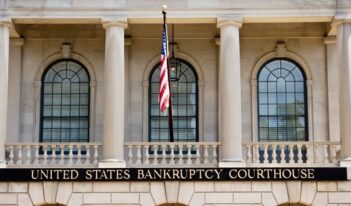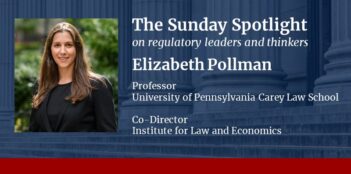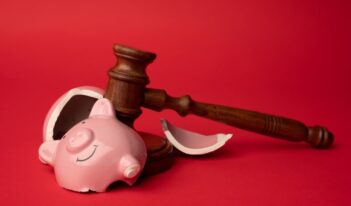
Scholar suggests reforms to make debt discharge more equitable under U.S. bankruptcy law.
For Americans in financial crisis, bankruptcy offers a chance at a fresh start. But do current bankruptcy rules exclude those debtors who most need a clean slate?
Law professor Nicole Langston argues that current rules for seeking debt forgiveness through bankruptcy conflict with the fresh start principle. In a recent journal article, she contends that Chapter 7 of the U.S. Bankruptcy Code disadvantages marginalized filers by making certain types of debt—such as student loans and penal fines—difficult to discharge.
At the same time, bankruptcy rules allow privileged filers—such as employers and police officers—to discharge civil liabilities at the expense of their victims, Langston asserts.
These inconsistent rules create disparate outcomes based on race and socioeconomic status, Langston argues. To make bankruptcy law more equitable, Langston proposes that the U.S. Congress give more Americans access to debt forgiveness by making all categories of debt dischargeable under Chapter 7.
Langston explains that lawmakers have deemed 21 categories of debt presumptively unforgivable in Chapter 7. That is, the law either bars filers from seeking discharge for those debts or else requires them to overcome a steep burden to prove that they deserve relief. Some of these categories include criminal and civil fines, domestic support obligations, and tax debts.
Langston argues that Congress crafted these exclusions based on inconsistent principles of moral culpability. She explains, for example, that policymakers have chosen to exclude civil and criminal fines from discharge eligibility because of their connection to misconduct. She contends, however, that these exclusions do not consider the seriousness of the misconduct at issue. She points out that even a ticket for an un-mowed lawn is ineligible for forgiveness.
By similar reasoning, policymakers have made student debt presumptively non-dischargeable due to fears that borrowers will opportunistically discharge loans before moving on to high-earning careers, Langston explains.
In contrast to these exclusions, Langston asserts that Chapter 7 takes a more permissive approach to the debts of filers who have committed civil rights and employment violations.
Langston explains that current law permits employers to discharge debts from civil awards that stem from employment lawsuits, such as those involving workplace discrimination, hostile work environments, and sexual harassment. The law may also afford police officials and corrections officers a pathway to discharge debts that they have been judged to owe victims of misconduct, Langston notes.
Victims of these violations bear the burden of persuading the bankruptcy court that it should not discharge their civil liability awards. To succeed, victims must prove that the individual who harmed them—someone who has already been ordered by another court to pay a penalty for those harms—did so willfully and maliciously. If the victim cannot do so, the court may forgive the debt, Langston asserts.
Under this inconsistent system of discharge exclusion, current bankruptcy laws result in a “double harm” to marginalized individuals both as filers and victims, Langston contends.
She argues that people of color, women, and people in poverty are more likely to incur non-dischargeable debts than more privileged groups. Furthermore, these groups are more likely to be victims of civil rights and employment violations than other groups, she maintains.
Langston outlines potential solutions. She suggests, as an initial step, that Congress should revise bankruptcy law to allow filers to discharge all penal and student debt under Chapter 7. She notes that some consumer advocates and legislators, including members of the U.S. Senate, have proposed amending the Bankruptcy Code to make these categories presumptively dischargeable.
Making these two types of debt dischargeable, however, may not do enough to affect systemic change, Langston cautions.
She suggests that an ideal bankruptcy system would provide for the discharge of all categories of debt. Langston acknowledges that such a measure may appear extreme, but she suggests that it may be the only way to ensure that bankruptcy law does not exclude marginalized debtors from paths to debt relief based on contested notions of morality.
Langston concedes that her solution would still not prevent civil rights violators and employers from discharging debts that they owe to victims. She argues, however, that her proposal would at least relieve marginalized individuals from one prong of the “double harm” that they face under current bankruptcy law.



